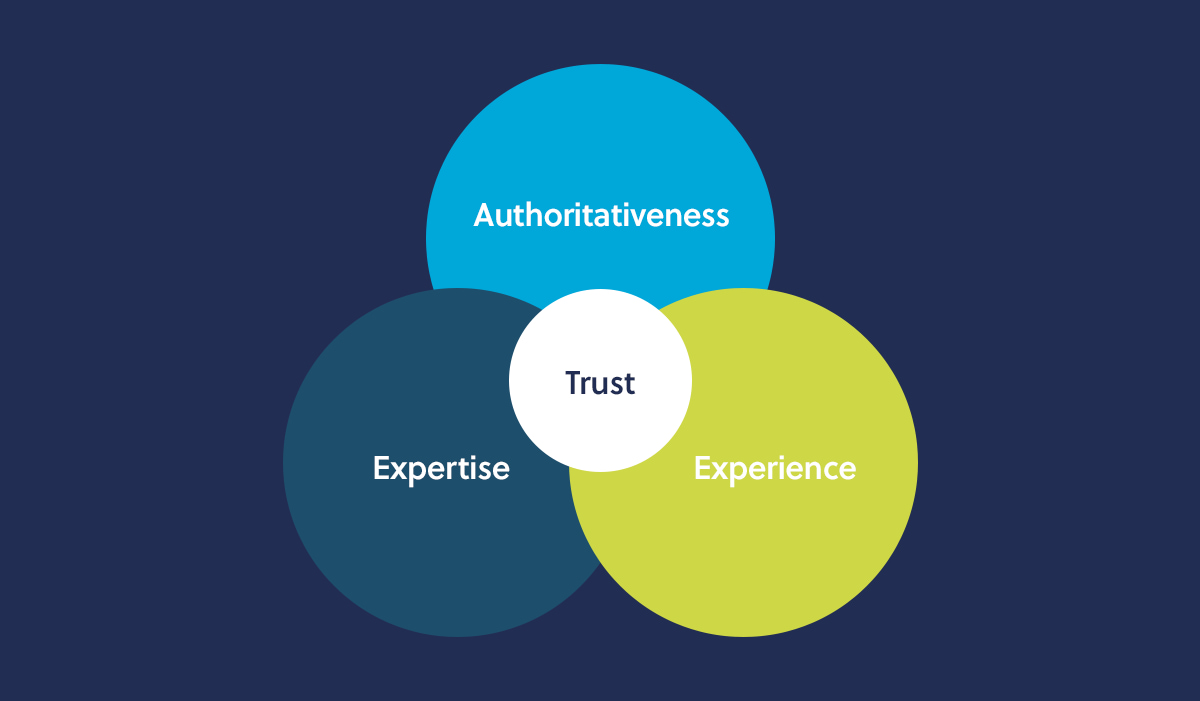Your guide to understanding E-E-A-T
What is EEAT and how is it measured by Google? We delve in to the impacts of EEAT on your website.
By Find Digital | Published on December 4, 2023


In the ever-shifting realm of SEO, there’s a vital acronym you should be keeping tabs on: E-E-A-T, standing for Expertise, Experience, Authoritativeness, and Trustworthiness. E-E-A-T has become a cornerstone in Google’s guidelines for ranking websites and is consistently being tweaked and updated by the Google team. But what does it mean exactly, and why does it matter for your website? Let’s dig in and explore what E-E-A-T really is.

What’s E-E-A-T?
E-E-A-T is a technology used by Google to size up the quality of website content for search engine rankings. It aims to sift out subpar content and give a boost to material that’s pertinent and helpful to users. The technology was first implemented by Google in 2014!
Now, let’s unravel what each part of the acronym signifies!
Expertise
Expertise boils down to how much you know about a specific subject. It’s not just about having fancy credentials (though they can be handy) – it’s about proving that you genuinely get your niche. For example, a chef scribbling about culinary tricks or a certified financial planner chatting about investment strategies will flaunt expertise in their respective fields.
Experience
Experience might sound akin to expertise, but it zeroes in on the user’s experience (UX) on the website. A site loaded with valuable content but sluggish load times or a befuddling layout fails to dish out a good experience. After all, top-notch content is of no use if it’s too much of a headache to access. By boosting your website’s UX, you can make sure it’s mobile-friendly, a breeze to navigate, and presents valuable content in a user-friendly manner.
Authoritativeness
Being an expert is one thing, but snagging recognition as a big shot in your field is a whole different ball game. Authoritativeness is crafted over time through unwavering content quality, bagging top-notch backlinks, and positioning your brand as a trailblazer. Picture brands like HubSpot in inbound marketing or Moz in SEO – their dependable, high-quality content has set them up as leaders in their niches, and their search engine rankings echo that.
Trustworthiness
In today’s digital landscape, trust is paramount. Websites need to demonstrate they’re rock-solid (think HTTPS), transparent in their dealings, and dependable in delivering content. Reviews and crystal-clear privacy policies can also give a leg up to a site’s trustworthiness.

Google Search (google.com) image provided by Unsplash.
How do I implement E-E-A-T?
E-E-A-T is not just a crazy buzzword. This measurement plays a vital role in how Google ranks your website and you must pay close attention to it, otherwise, you will face hard times when it comes to ranking for your desired keywords.
Write good content
The biggest factor is your content. When publishing content on your website, you need to ensure that the content is well-researched, accurate, and offers readers serious value. Avoid plagiarism, spam, or just false information and always link back to any sources you use.
Focus on user experience
This shouldn’t come as a surprise to you but your website should revolve around your target audience. Invest time and energy into improving key areas of your website including navigation, speed, mobile optimisation, and image quality. Improving these key areas will also help improve your website’s conversion rates.
Increase authority
For the SEO-ers out there, you should also be building reputable authority. Website authority is a measurement used by Google and other search engines to understand if users like your content. Authority is achieved by earning high-quality backlinks and mentions on other websites.
Authority will help you prove to Google that your website and its content is valuable and trustworthy.
How to measure E-E-A-T success
Measuring the success of your website’s E-E-A-T strategy can be difficult. But, with some time and expertise from our SEO experts at Find Digital, you can measure and monitor your content performance and identify ways to further improve your content.
Share this article
Related articles
Looking for more? Explore more articles




